How deep should you plant potatoes?
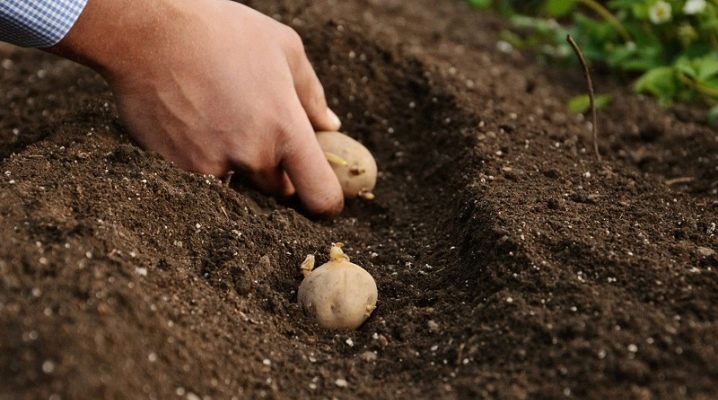
Various factors affect the amount of potato crop: weather conditions, type of soil, selected variety, regular feeding, as well as the method of planting. In the article, we will take a closer look at what depth to plant potatoes.
Landing taking into account the time and region
If you plant potatoes at a certain depth, then they will receive a sufficient amount of heat and moisture. It is also important to consider the timing of planting, since early or late will lead to an almost complete lack of potato harvest.
In the southern regions, it is recommended to plant potatoes as early as March. But the middle lane, for example, the Moscow region, is suitable for planting on the May holidays.
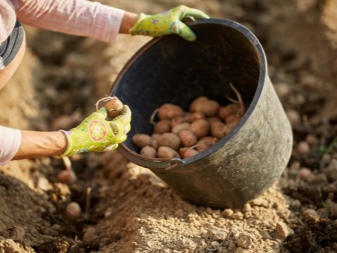

The planting time of potatoes has a direct impact on the depth of placement of the tubers.
- If at a depth of 10 cm the soil temperature is +8 degrees, then the soil is already warm enough, for potatoes you can choose a medium or deep planting.
- During cool and rainy weather, shallow planting is the best solution. It is advisable to make the holes smaller by a few centimeters, minor frosts will not damage the potatoes.
- During dry and warm weather, deep planting can be considered as moisture from the upper layers of the soil will dry out rather quickly.
It is worth paying attention to the size of the holes, since the possibility of the development of the root system depends on them, as a result, tubers of a certain size are formed. When choosing a place for planting potatoes, it is very important to know what was planted here earlier. It is highly discouraged to plant potatoes in places where nightshades have already grown. If potatoes grew earlier, then they can be planted again in the same place after 3-4 years.
Let's take a closer look at how the time of planting potatoes depends on the region:
- Central region - first half of May;
- in the Black Earth Region - in the first third of May;
- in the Urals and the Far East - the second part of May;
- in the North Caucasus, Crimea and Belarus - all April;
- in Siberia and in the Leningrad region - from mid-May to early June.
Important: it should be borne in mind that the growing season of potatoes is three months. If it is decided to bury the root crop in May, then it will be necessary to harvest in August.
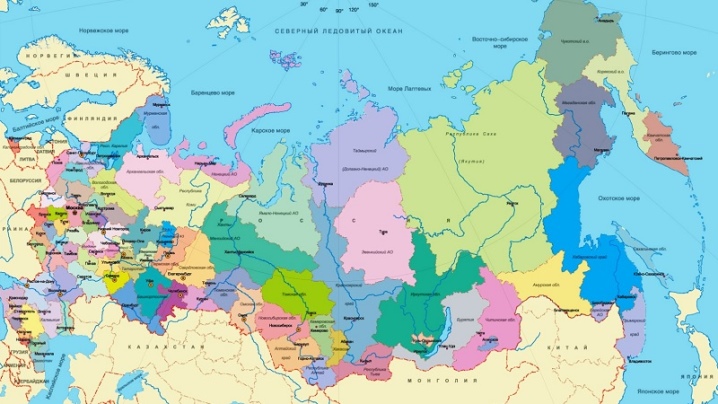
Correct depth for soil type
It is recommended to choose in advance a place for planting potatoes, because the soil is of great importance when growing it. It is best to tackle this issue in the fall. The sun's rays should fall on the site, and there should also be no high humidity. The optimal soil will be the one on which something is planted every year, since annual plantings make the soil loose, which will positively affect the development of the root crop. It is recommended to carry out additional processing if the soil is loamy or clayey.
It is advisable to plant potatoes after cabbage, leafy, pumpkin or leguminous plants. These vegetables do not drain the soil, so it contains enough nutrients to grow potatoes. No need to plant root vegetables after eggplants, tomatoes and bell peppers. It is better to bypass the places where berry bushes grew, for example, strawberries or raspberries. After them, the soil does not have time to get enough of the necessary bacteria, as a result, the potato fruits grow small. In addition, the risk of contracting the disease is significantly increased.
It is recommended to plant green manures first, which will rot in a few months, having saturated the soil with all the necessary elements, and it will be ready for planting potatoes. These include beans, peas and clover.
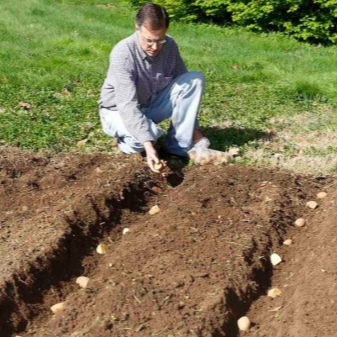
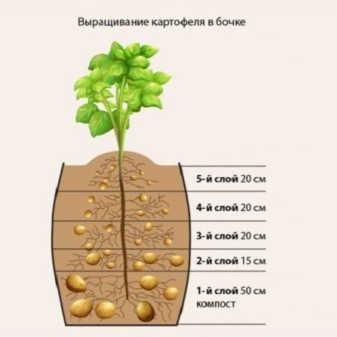
Initially, the soil must be dug up so that it is saturated with air. To do this, you can use an ordinary shovel or use a special technique. Some professionals are familiar with no-till. The essence of this method lies in the fact that the earth is loosened thanks to a disc cultivator or a flat cutter, which only passes over the top layer.
It is very important to apply organic and mineral fertilizers before planting potatoes, which you can prepare yourself or buy ready-made in specialized stores. Root crops need potassium, phosphorus and nitrogen. Experts recommend the following fertilization options:
- potassium nitrate;
- wood ash;
- superphosphate;
- urea;
- humus.
Fertilizer must be added deep into the ground before or during planting. It is advisable to mix grass or peat with soil when digging in spring or autumn.
Important: potatoes can be planted deeper in loose, sandy soil, but for hard soils, the depth of the hole should be insignificant so that the plants can germinate.
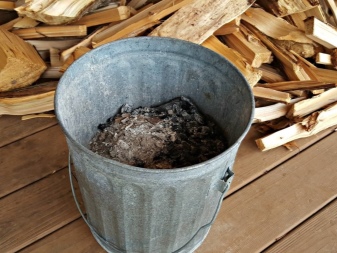
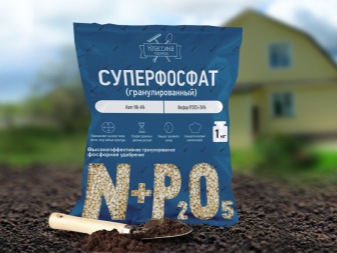
How does the size of the planting tuber affect?
If large potatoes are deposited for food, and small ones for planting, then the likelihood that the harvest will be insignificant increases. Small tubers put up few roots, they are not enough for the active development of the bush. But if small potatoes are planted in damp soil, then the situation is much better. The tops grow strong and give an impetus to the development of strong roots and large root crops. But drought, lack of organic matter lead to the formation of weak tops, which turn yellow over time.
You should know when to stop - do not use small root crops, but also do not take large potatoes. In order for them to actively begin to grow, it is recommended to cut them into several parts, while each of them must have strong roots. All sections must be processed for disinfection using ash.
Important: medium tubers with an even shape and a large number of eyes are the optimal material for planting.
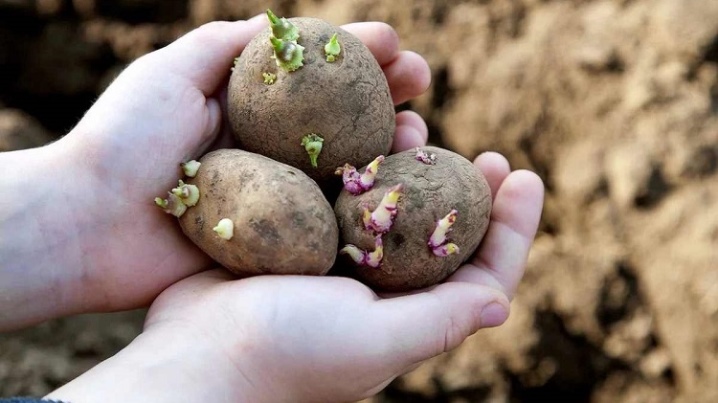
Influence of the landing method
Today there is a fairly wide variety of ways to plant potatoes. The choice depends on many factors: the size of the area for planting, the level of groundwater, weather conditions, and more. It is not necessary to plow only in the spring, it is recommended to start preparation in the fall. Initially, all weeds should be removed from the site, dig up the ground and fertilize it. For 1 sq. m will require 1 kg of ash and 15 kg of compost or humus. In the spring, the land needs another digging, leveling and further planting of root crops.
Under the shovel
When planting potatoes on black soil, the method of planting under a shovel is usually used. It is ideal for small areas, but the groundwater must go quite deep. This method assumes a planting depth of about 12 cm (half a bayonet).
When landing under a shovel, several schemes can be used.
- Planting in furrows or holes. The distance between the pits should be about 30-35 cm, but between the rows - 70 cm. When the tops appear, it is necessary to spud it, creating a mound around the stalk.
- Square-nested version. For this type of planting, holes should be made for planting at a distance of about 50-70 cm from the neighboring ones.
- Chess solution. If each next row of holes is made with a shift of half the distance between the holes, then you get an arrangement like on a chessboard.
- Mittlider scheme. In this case, double rows are used. It is recommended to maintain a distance of 1 meter between them. A distance of 30 cm is maintained between the pits. It is necessary to adhere to a checkerboard pattern. This method is the most economical in terms of space utilization.In addition, the potatoes do not need to be hilled; you can save your energy and time.
Planting potatoes under a shovel implies the location of the planting material sprouts up. If a linear arrangement is used, then the presence of a board will help to make the correct markup. Holes are dug when a person is standing on the board. Then it should be moved 1 meter to maintain the distance between the rows. You can start digging the next row, at which time the ground from the second row is used to bury the first. Even rows are obtained.
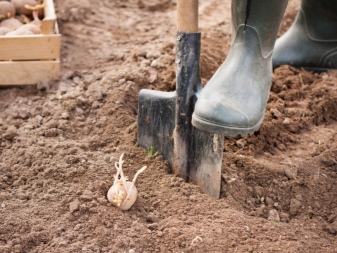
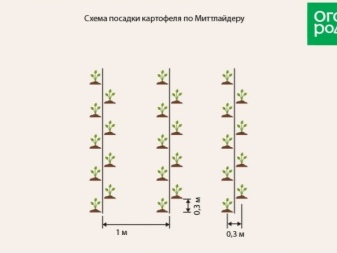
Ridge method
This option is optimal for heavy soil. On the site, trenches are made 5-6 cm deep for loamy lands or 8-10 cm for chernozems. The potatoes are laid out in trenches, and then ridges up to 15 cm are formed. This option guarantees excellent airing of the landing. In addition, this planting option eliminates the flooding of the crop, since the water will go away rather quickly.
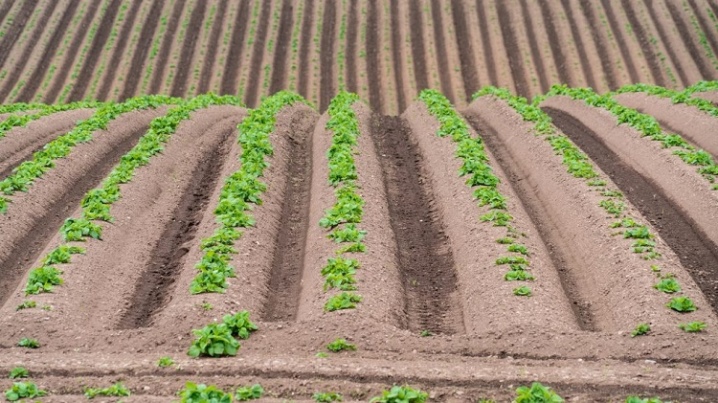
In the trenches
This method is not very simple, but nevertheless it is in demand, because it is ideal for planting early varieties of potatoes. In the fall, you need to form furrows to a depth of 20 cm. Then they are mulched with leaves, sawdust and humus. This layer of mulch will drop to 5 cm during the winter. In spring, the tubers are sealed by hand, and wide ridges are formed on top.
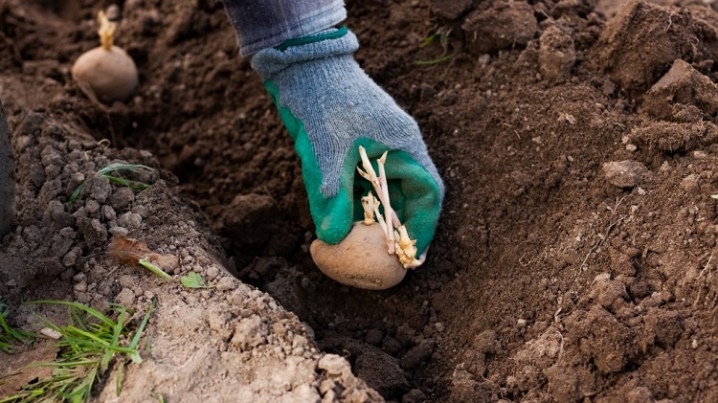
Straw application
This option does not require plowing the land. As you know, straw is very air permeable, so the roots germinate rather quickly in it. Tubers do not need to be planted in the ground, they are laid out on top and covered with straw.
In order for the tops to actively develop, it should be gradually sprinkled with straw.
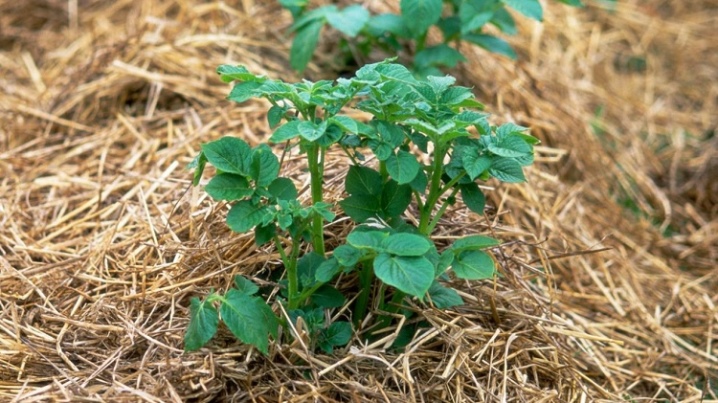
Since autumn
Planting tubers can be practiced even in autumn, if the winters in the region are mild, frost-free. This method will allow you to get a fairly early harvest, and also exclude the possibility of late blight disease. In this case, special attention should be paid to the planting depth. In holes up to 12 cm deep, potatoes will die from the cold. If you use pits 30 cm deep, then the harvest will be late. The optimum depth should be within 15-20 cm. In addition, straw or spruce branches are used to cover the beds.

In containers
This method involves the use of special boxes that are filled with organic elements. The filling should be completely changed every year. This option is ideal for rather cold regions with harsh climates, while young potato varieties can be grown. It is recommended to place containers from north to south, then the plants will receive a lot of light and heat. Potatoes should be planted only 6-8 cm deep.
Some planting methods allow for minimal manual labor. Planting or collecting potatoes can be done under a walk-behind tractor or a potato planter. Experienced gardeners emphasize that planting depth plays an important role in growing potatoes. The new harvest completely depends on it.
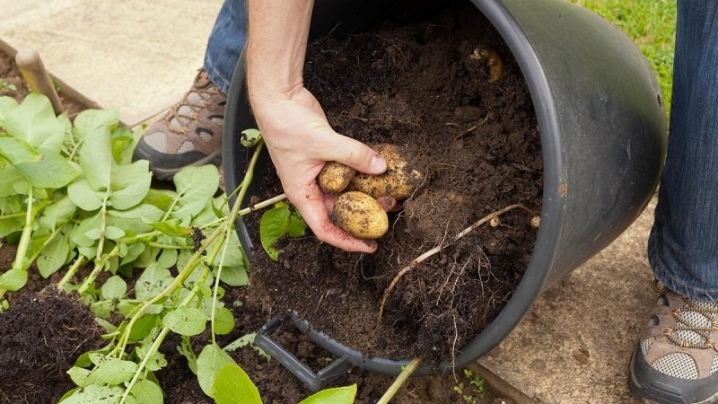













The comment was sent successfully.